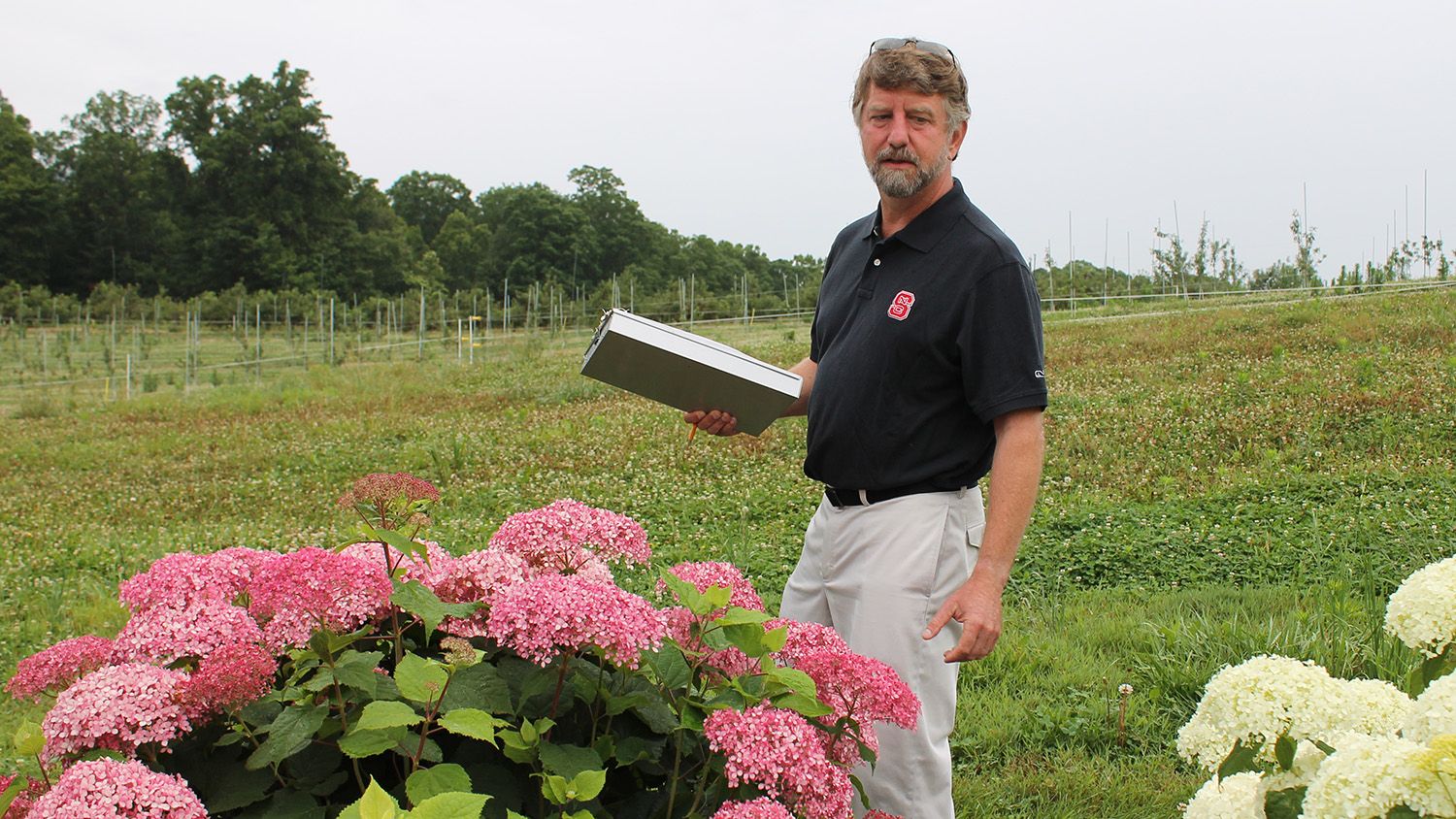Faculty Focus: Tom Ranney

Step into Tom Ranney’s greenhouse at the Mountain Horticultural Crops Research and Extension Center near Asheville, and you’ll find the makings of an award-winning scientist imbued with patience, determination and an artistic flair.
Ranney is the J.C. Raulston Distinguished Professor in NC State University’s Department of Horticultural Science, and he’s charged with improving a range of nursery and bioenergy crops. Over the past 28 years, he and his team with the Mountain Crop Improvement Lab have developed and introduced nearly 30 new plants — among them, large, bold ornamental grasses that won’t spread where they aren’t wanted, hydrangeas with flowers in bright shades of pink, and compact, evergreen dogwoods.
Ranney’s success is reflected not just in the greenhouse but also in the many awards he and his students have won over the years. Most recently, he received the American Horticultural Society’s Luther Burbank Award for extraordinary achievement in the field of plant breeding. It’s clear he’s making progress in leading his lab to its goal: growing a greener and more prosperous world.
NC State has a long history in plant breeding innovation on a number of crops. What distinguishes the Mountain Crop Improvement Lab?
Unlike other breeding programs that might focus very narrowly on one specific genus of plants, we are working on dozens of different groups of plants, which makes it fun. One focus is developing plants that are noninvasive — there are some plants that have been important for the nursery industry that are weedier than we would like them to be. … One example: This is a miscanthus that’s called Bandwidth; it’s a dwarf and it’s variegated, and it’s unique in that it’s a triploid — it has three sets of chromosomes — which makes it sterile. We used the same technology … used to develop seedless watermelon and seedless bananas, so you can grow this plant in the garden, and it won’t reseed and become a problem in the environment.
Beyond that we are developing … dogwoods that are evergreen shrubs that have different colored flowers and bracts. The same with magnolias. … We’ve been working a lot with some of our native hydrangeas and trying to give them more commercial appeal — different flower colors, good cold hardiness and reblooming characteristics. So it really varies on a case- by-case basis what our breeding objectives might be.
Can you tell me more about the pink hydrangeas you are testing in the field?
The pink hydrangeas were a bit of a breakthough: We have a native hydrangea here in the mountains — it’s sometimes called smooth hydrangea or mountain hydrangea, and historically it’s only come in one color — white. What we’ve done is we were able to bring in different flower colors and created a series that range from pinks to reds to purples to whites that (range from) large-growing plants to dwarfs. … Because pink was the new flower color for these, we were able to partner with the Breast Cancer Research Foundation, and the growers donate $1 for each plant to the foundation. At this point, they’ve raised close to a million dollars by co-marketing … the Invincibelle™ hydrangeas.
Why is this work important?
The nursery industry is big business in North Carolina — some people don’t appreciate that the overall economic impact of the nursery/landscape/floriculture industry is over $8 billion annually in total. They employ over 125,000 people, so the impacts on the economy, on employment, on enhancing the environment, and on improving our quality of lives are substantial. It’s a real pleasure to work within that industry.
What role does the landscape and nursery industry play in your work?
We work very closely with industry and get input from a lot of different people on projects. We feel that we’ve got a particular expertise on the plant breeding side, but the industry knows much more about marketing opportunities and commercializing crops, so we work closely with industry partners to get their insights and input on the projects and directions — and if they think we are on track or if we need to focus on a different direction.
What is the most rewarding part of your job?
I’m proud of a lot of things, but in addition to the plants, I’d have to say the thing I’m most proud about are our students. The students have been a huge satisfaction to me — seeing the students develop successful careers and become leaders in the industry. They, of course, challenge me and keep me inspired, and bring new ideas. It’s been a great pleasure to work with both undergraduate and graduate students.
What’s next?
In plant breeding, the best is always left to come. Working with nursery crops we have such a broad diversity of plants and genetic diversity, our opportunities are endless.
Learn more about the extraordinary research taking place at the Mountain Horticultural Crops Research Center in Mills River.
- Categories:


